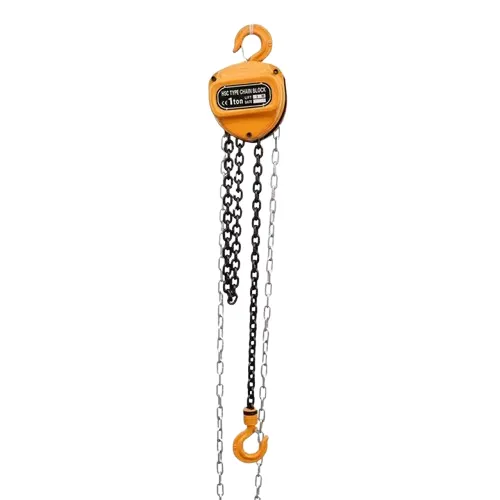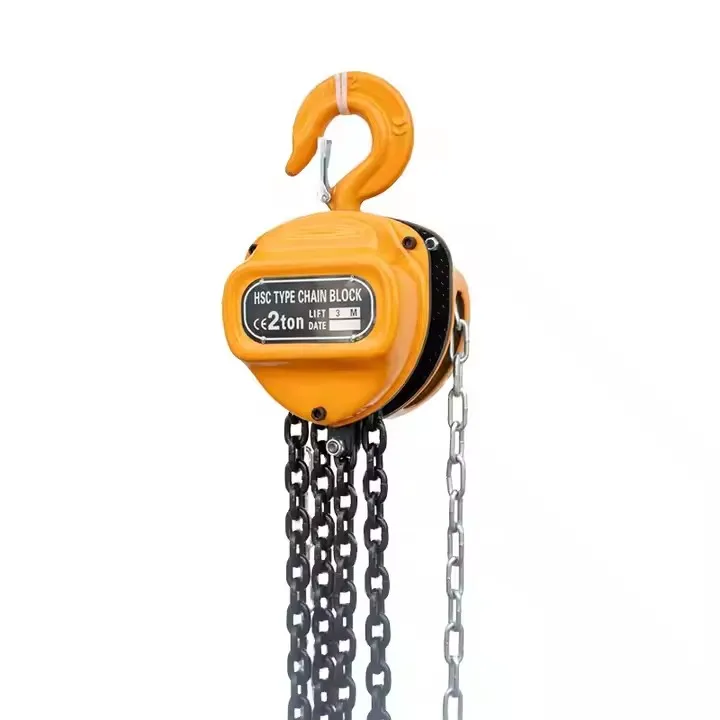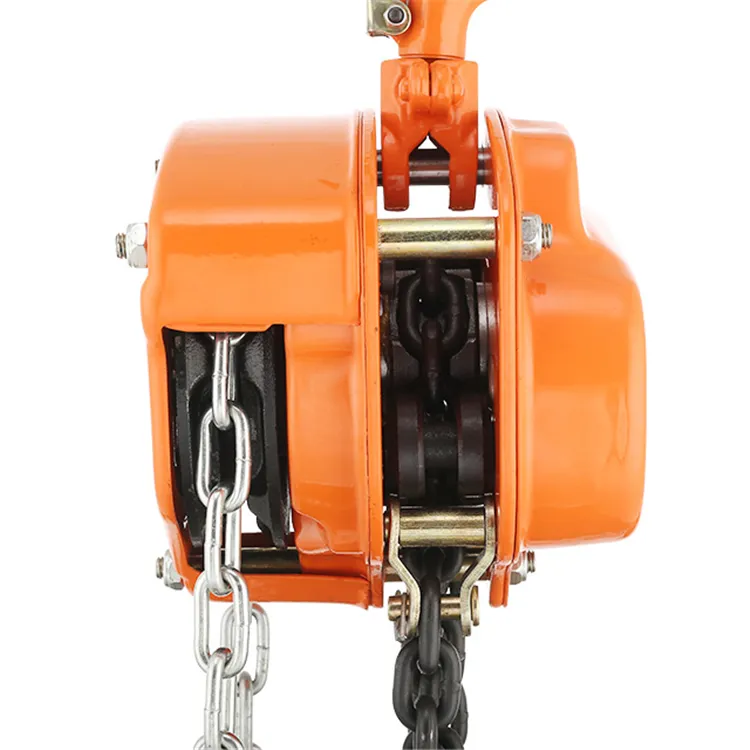


Oct . 20, 2025 13:25 Back to list
Chain Block and Tackle for Sale – Heavy-Duty & Fast Ship
Chain Block and Tackle for Sale: a practical, insider’s guide
Hunting for a chain block and tackle for sale can feel oddly complicated for such a simple manual tool. I’ve toured shops from Ningbo to Newcastle, and—surprisingly—the biggest difference isn’t the paint color; it’s metallurgy, chain calibration, and honest testing. The Chain Block from China here is a classic manual lifting machine (also known as a chain hoist or manual puller) that many customers say “just works” in tight spaces where power isn’t available.

What’s trending (and why it matters)
In fact, demand is shifting toward compact, sealed gear trains, higher-grade load chain (G80/Grade 80 and increasingly G100), and corrosion-resistant finishes. To be honest, the big talk in 2025 is lifecycle cost: fewer breakdowns, easier inspection, and predictable spare parts. It seems that shops want manual lifting that can survive dust, rain, and the occasional “oops.”
Key technical spec snapshot
- WLL range: 0.5–10 t common; heavy-duty builds to 20 t
- Load chain: Alloy steel, calibrated to EN 818-7; typical Grade 80/100
- Hooks: Forged alloy with safety latches; rotation with bearing race on higher models
- Gear train: Enclosed spur gearing; zinc/epoxy coated housing on some variants
- Hand effort: optimized via mechanical advantage; real-world use may vary with height and environment
- Standards: EN 13157 (manual hoists), ASME B30.16, CE; factory ISO 9001
| Item | Spec |
|---|---|
| Working Load Limit | ≈ 1 t, 2 t, 3 t, 5 t, 10 t options |
| Standard Lift | 3 m (custom 1–12 m) |
| Load Chain | G80/G100 alloy, calibrated per EN 818-7 |
| Proof Load Test | 1.5 × WLL (per EN 13157 / ASME B30.16) |
| Min. Breaking Load | ≥ 4 × WLL chain system |
| Finish | Anti-corrosion coating; salt-spray ≈ 96 h |

How it’s made (and vetted)
Materials: alloy steel load chain, forged hooks, high-strength steel side plates. Methods: precision machining, heat treatment, shot peening, electrophoretic or powder coating. Testing: 100% proof load, NDT on hooks, dimensional chain calibration, brake torque check, and functional pulls at various heights. Service life: around 5–10 years with routine inspection and lubrication; I’ve seen well-kept units last longer in light duty.
Certifications and standards referenced: ISO 9001 (factory QA), EN 13157 for manual hoists, ASME B30.16 for overhead hoists, and EN 818-7 for calibrated chain. Typical test data from factory reports shows ≤ 2.5% hand effort drift across temperature from 5–35°C and brake holding above 125% WLL—solid, to be honest.
Where it shines
- Fabrication bays and maintenance pits with no power
- Construction lifts for beams, valves, and HVAC units
- Marine and offshore rigs (with corrosion package)
- Mining and plant turnarounds where portability is king
Advantages: precise inching, low maintenance, great in confined headroom, and, actually, very forgiving in dusty environments compared with electric hoists.
| Vendor | Certs | WLL Range | Lead Time | After-Sales | Indicative Price |
|---|---|---|---|---|---|
| Factory A (China) | ISO 9001, CE | 0.5–10 t | ≈ 2–4 weeks | Spare kits + remote support | $ |
| Brand B | CE, TUV | 1–20 t | ≈ 3–6 weeks | Global service depots | $$ |
| Brand C (Premium) | ASME, EN | 0.5–50 t | ≈ 4–8 weeks | On-site technicians | $$$ |

Customization and options
- Lift height: 1–12 m (longer on request)
- Stainless or galvanized chain for aggressive environments
- Overload protection, low-headroom trolleys, spark-resistant kits (ATEX-like needs—ask for conformity)
- Color coding and QR-based inspection tags
Mini case notes from the field
Fabricator, UAE: Switched to G100 chain on 3 t units; reported smoother pull and ≈ 12% lower hand effort during repetitive lifts.
HVAC contractor, UK: 2 t hoists with 6 m lift—fewer call-backs; brake held at 125% WLL during audits. “Not pretty, but bulletproof,” they joked.
Marine yard, SE Asia: Corrosion package plus sealed bearings; after 18 months, chain elongation measured under 1.2%—well inside EN limits.

If you’re comparing a chain block and tackle for sale for real-world work, prioritize standards compliance, chain grade, proof-load certificates, and parts availability. Actually, ask for the test sheets—good vendors are happy to share them.
Citations
- EN 13157: Hand-powered lifting equipment—Safety requirements.
- ASME B30.16: Overhead Hoists (Underhung).
- EN 818-7: Short link chain for lifting purposes—Calibrated chain for chain hoists.
Latest news
Hydraulic Crimping Tool – Precision & Heavy-Duty Speed
NewsNov.05,2025
Cable Pulling Swivel | High-Strength, Anti-Twist, Stainless
NewsNov.04,2025
Cable Pulling Tools – Pro-Grade, Safe, Fast Install
NewsNov.03,2025
Hydraulic Crimping Tool – Fast, Precise, Quick-Change Dies
NewsNov.02,2025
Hydraulic Crimping Tool for Sale | Fast, Precise, Heavy-Duty
NewsNov.01,2025
Duct Rodder for Sale – Non-Conductive, Durable Fiberglass
NewsOct.31,2025









